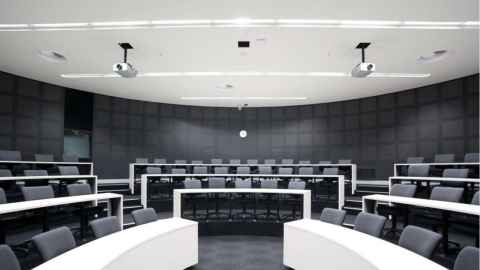Project sheds new light on energy savings
5 May 2017
A university-wide project is shedding new light on the energy that can be saved through the smart use of facilities.

A successful trial of new control systems which automatically turn off lights when a room is not in use, along with new energy-efficient lighting, is being rolled out to lecture theatres and other building spaces across the University.
Initially trialled in lecture theatres in Law, Engineering and School of Biological Sciences buildings, new lighting controls have been added in three large theatres in the Business School, along with the replacement of fluorescent lights with energy-saving LED units. Similar improvements are being made in other university spaces as part of an on-going rollout.
Lecture theatres have for a number of years had sensors designed to detect if the room is in use. But concerns over lights switching off in error during lectures meant lights were often left on all day.
New high-tech sensors, whose shutdown sequence includes a visible countdown on the lectern alerting lecturers to the need for movement, allow more accurate control of lighting – shutting down lights, along with other devices such as sound and projection when a room is empty.
Energy use and maintenance costs can be significantly reduced by ensuring lights are not on continuously. Not only do the lights use energy but, because they create heat, energy costs rise further when the air-conditioning has to work harder to pull the theatre temperature down to a comfortable level.
Less use of lights also helps to cut maintenance costs as lighting units don’t wear out as quickly.
“These changes mean we are continuously saving, and the savings are multiplying,” says Danny.
Aldon Hartley, Associate Director Academic Solutions, Information Technology Services, added: “These changes are making a big difference in energy used while also optimising the specific requirements of users in each location.”
The scheme started with some of the largest lecture theatres, maximising the initial impact, with the aim of progressively rolling it out across other lecture theatres and building spaces.